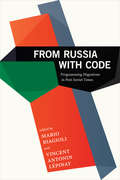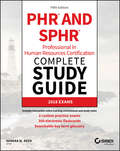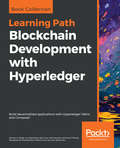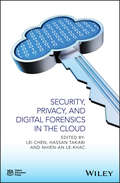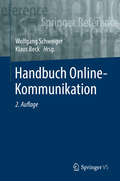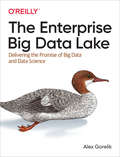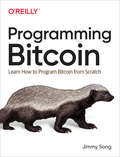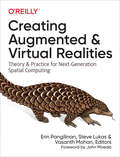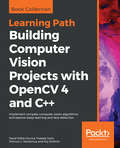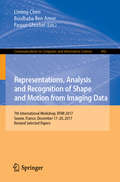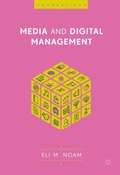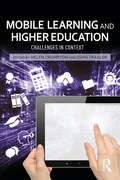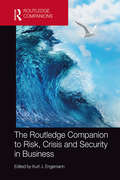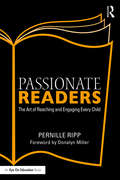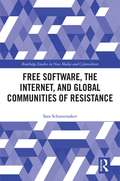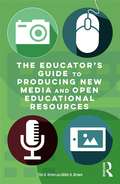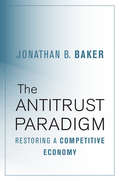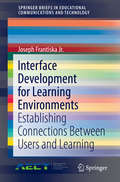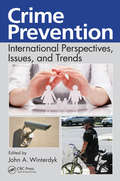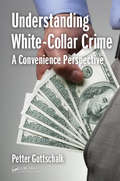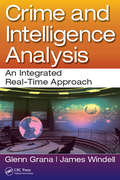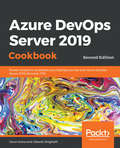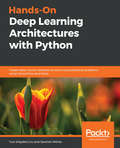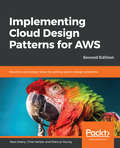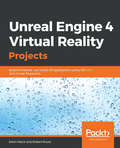- Table View
- List View
From Russia with Code: Programming Migrations in Post-Soviet Times
by Mario Biagioli Vincent Antonin LépinayWhile Russian computer scientists are notorious for their interference in the 2016 US presidential election, they are ubiquitous on Wall Street and coveted by international IT firms and often perceive themselves as the present manifestation of the past glory of Soviet scientific prowess. Drawing on over three hundred in-depth interviews, the contributors to From Russia with Code trace the practices, education, careers, networks, migrations, and lives of Russian IT professionals at home and abroad, showing how they function as key figures in the tense political and ideological environment of technological innovation in post-Soviet Russia. Among other topics, they analyze coders' creation of both transnational communities and local networks of political activists; Moscow's use of IT funding to control peripheral regions; brain drain and the experiences of coders living abroad in the United Kingdom, United States, Israel, and Finland; and the possible meanings of Russian computing systems in a heterogeneous nation and industry. Highlighting the centrality of computer scientists to post-Soviet economic mobilization in Russia, the contributors offer new insights into the difficulties through which a new entrepreneurial culture emerges in a rapidly changing world. Contributors. Irina Antoschyuk, Mario Biagioli, Ksenia Ermoshina, Marina Fedorova, Andrey Indukaev, Alina Kontareva, Diana Kurkovsky, Vincent Lépinay, Alexandra Masalskaya, Daria Savchenko, Liubava Shatokhina, Alexandra Simonova, Ksenia Tatarchenko, Zinaida Vasilyeva, Dimitrii Zhikharevich
PHR and SPHR Professional in Human Resources Certification Complete Study Guide: 2018 Exams
by Sandra M. ReedThe #1 book for the leading HR certifications, aligned with the updated HRBoK™ PHR and SPHR certifications, offered by Human Resources Certification Institute (HRCI), have become the industry standard for determining competence in the field of human resources. Developed by working professionals, the PHR and SPHR credentials demonstrate that recipients are fully competent HR practitioners based on a standard set by workforce peers. Offering insights into those areas of knowledge and practices specific and necessary to human resource management (HRM), this study guide covers tasks, processes, and strategies as detailed in the updated A Guide to the Human Resource Body of Knowledge™ (HRBoK™). The study guide breaks down the critical HR topics that you need to understand as you prepare for the exams. PHR/SPHR Professional in Human Resources Certification Study Guide, Fifth Edition, is the ideal resource for HR professionals seeking to validate their skills and knowledge acquired through years of practical experience, as well as for a relative newcomer to the HR field looking to strengthen their resume. In this edition of the top-selling PHR/SPHR study guide, you’ll find a practical review of all topics covered on the exams, as well as study tools designed to reinforce understanding of key functional areas. Strengthen the skills you learn with a year of FREE access to the Sybex online learning environment, complete with flash cards and practice quizzes to prepare you for exam day. • Business Management and Strategy • Workforce Planning and Employment • Compensation and Benefits • Human Resource Development and more If you’re preparing for these challenging exams, this is the trusted study guide that’ll help you perform your best.
Blockchain Development with Hyperledger: Build decentralized applications with Hyperledger Fabric and Composer
by Salman A. Baset Luc Desrosiers Nitin Gaur Petr Novotny Anthony O'Dowd Venkatraman Ramakrishna Weimin Sun Xun (Brian) WuLearn quick and effective techniques for developing blockchain-based distributed ledgers with easeKey FeaturesDiscover why blockchain is a game changer in the technology landscapeSet up blockchain networks using Hyperledger FabricWrite smart contracts at speed with Hyperledger ComposerBook DescriptionBlockchain and Hyperledger are open source technologies that power the development of decentralized applications. This Learning Path is your helpful reference for exploring and building blockchain networks using Ethereum, Hyperledger Fabric, and Hyperledger Composer.Blockchain Development with Hyperledger will start off by giving you an overview of blockchain and demonstrating how you can set up an Ethereum development environment for developing, packaging, building, and testing campaign-decentralized applications. You'll then explore the de facto language Solidity, which you can use to develop decentralized applications in Ethereum. Following this, you'll be able to configure Hyperledger Fabric and use it to build private blockchain networks and applications that connect to them. Toward the later chapters, you'll learn how to design and launch a network, and even implement smart contracts in chain code. By the end of this Learning Path, you'll be able to build and deploy your own decentralized applications by addressing the key pain points encountered in the blockchain life cycle.This Learning Path includes content from the following Packt products:Blockchain Quick Start Guide by Xun (Brian) Wu and Weimin SunHands-On Blockchain with Hyperledger by Nitin Gaur et al.What you will learnUnderstand why decentralized applications are necessaryDevelop and test a decentralized application with Hyperledger Fabric and Hyperledger ComposerWrite and test a smart contract using SolidityDesign transaction models and chain code with GolangDeploy the Composer REpresentational State Transfer (REST) Gateway to access Composer transactionsMaintain, monitor, and manage your blockchain solutionsWho this book is forThis Learning Path is designed for blockchain developers who want to build decentralized applications and smart contracts from scratch using Hyperledger. Basic familiarity with or exposure to any programming language will be useful to get started with this course.
Security, Privacy, and Digital Forensics in the Cloud
by Lei Chen Hassan Takabi Nhien-An Le-KhacIn a unique and systematic way, this book discusses the security and privacy aspects of the cloud, and the relevant cloud forensics. Cloud computing is an emerging yet revolutionary technology that has been changing the way people live and work. However, with the continuous growth of cloud computing and related services, security and privacy has become a critical issue. Written by some of the top experts in the field, this book specifically discusses security and privacy of the cloud, as well as the digital forensics of cloud data, applications, and services. The first half of the book enables readers to have a comprehensive understanding and background of cloud security, which will help them through the digital investigation guidance and recommendations found in the second half of the book. Part One of Security, Privacy and Digital Forensics in the Cloud covers cloud infrastructure security; confidentiality of data; access control in cloud IaaS; cloud security and privacy management; hacking and countermeasures; risk management and disaster recovery; auditing and compliance; and security as a service (SaaS). Part Two addresses cloud forensics – model, challenges, and approaches; cyberterrorism in the cloud; digital forensic process and model in the cloud; data acquisition; digital evidence management, presentation, and court preparation; analysis of digital evidence; and forensics as a service (FaaS). Thoroughly covers both security and privacy of cloud and digital forensics Contributions by top researchers from the U.S., the European and other countries, and professionals active in the field of information and network security, digital and computer forensics, and cloud and big data Of interest to those focused upon security and implementation, and incident management Logical, well-structured, and organized to facilitate comprehension Security, Privacy and Digital Forensics in the Cloud is an ideal book for advanced undergraduate and master's-level students in information systems, information technology, computer and network forensics, as well as computer science. It can also serve as a good reference book for security professionals, digital forensics practitioners and cloud service providers.
Handbuch Online-Kommunikation
by Wolfgang Schweiger Klaus BeckDas Handbuch gibt in 23 Beiträgen einschlägiger FachautorInnen einen umfassenden und systematischen Überblick des aktuellen Forschungsstandes kommunikationswissenschaftlicher Online-Forschung. Einführend werden die zentralen Fragestellungen, theoretischen Ansätze und empirischen Befunde dargestellt. Das Themenspektrum reicht von den Grundlagen computervermittelter Kommunikation (interpersonale, Gruppen- und öffentliche Kommunikation), über ökonomische, ethische und politische Fragen wie Regulierung und Kontrolle des Internets, sowie seine Verbreitung, Nutzung und Wirkung. Weitere Beiträge befassen sich mit Öffentlichkeit und Journalismus online, kulturellen und sozialpsychologischen Aspekten, Online-Werbung und -PR, Gesundheitskommunikation, E-Learning und Wissensmanagement sowie Online-Spielen. Ein Überblick über Methoden der Online-Forschung sowie die wichtigsten Datenquellen und Standarduntersuchungen rundet das Werk ab.
The Enterprise Big Data Lake: Delivering the Promise of Big Data and Data Science
by Alex GorelikEnterprises are experimenting with using Hadoop to build Big Data Lakes, but many projects are stalling or failing because the approaches that worked at Internet companies have to be adopted for the enterprise. This practical handbook guides managers and IT professionals from the initial research and decision-making process through planning, choosing products, and implementing, maintaining, and governing the modern data lake.You'll explore various approaches to starting and growing a Data Lake, including Data Warehouse off-loading, analytical sandboxes, and "Data Puddles." Author Alex Gorelik shows you methods for setting up different tiers of data, from raw untreated landing areas to carefully managed and summarized data. You'll learn how to enable self-service to help users find, understand, and provision data; how to provide different interfaces to users with different skill levels; and how to do all of that in compliance with enterprise data governance policies.
Programming Bitcoin: Learn How to Program Bitcoin from Scratch
by Jimmy SongDive into Bitcoin technology with this hands-on guide from one of the leading teachers on Bitcoin and Bitcoin programming. Author Jimmy Song shows Python programmers and developers how to program a Bitcoin library from scratch. You’ll learn how to work with the basics, including the math, blocks, network, and transactions behind this popular cryptocurrency and its blockchain payment system.By the end of the book, you'll understand how this cryptocurrency works under the hood by coding all the components necessary for a Bitcoin library. Learn how to create transactions, get the data you need from peers, and send transactions over the network. Whether you’re exploring Bitcoin applications for your company or considering a new career path, this practical book will get you started.Parse, validate, and create bitcoin transactionsLearn how to use the Bitcoin Script smart contract languageWork with exercises in each chapter to build a Bitcoin library from scratchUnderstand how to secure a blockchain by verifying proof of workProgram Bitcoin using Python 3 and libraries including pycoinUnderstand how simplified payment verification and light wallets workWork with public-key cryptography and cryptographic primitives
Creating Augmented and Virtual Realities: Theory and Practice for Next-Generation Spatial Computing
by Erin Pangilinan Steve Lukas Vasanth MohanDespite popular forays into augmented and virtual reality in recent years, spatial computing still sits on the cusp of mainstream use. Developers, artists, and designers looking to enter this field today have few places to turn for expert guidance. In this book, Erin Pangilinan, Steve Lukas, and Vasanth Mohan examine the AR and VR development pipeline and provide hands-on practice to help you hone your skills.Through step-by-step tutorials, you’ll learn how to build practical applications and experiences grounded in theory and backed by industry use cases. In each section of the book, industry specialists, including Timoni West, Victor Prisacariu, and Nicolas Meuleau, join the authors to explain the technology behind spatial computing.In three parts, this book covers:Art and design: Explore spatial computing and design interactions, human-centered interaction and sensory design, and content creation tools for digital artTechnical development: Examine differences between ARKit, ARCore, and spatial mapping-based systems; learn approaches to cross-platform development on head-mounted displaysUse cases: Learn how data and machine learning visualization and AI work in spatial computing, training, sports, health, and other enterprise applications
Building Computer Vision Projects with OpenCV 4 and C++: Implement complex computer vision algorithms and explore deep learning and face detection
by David Millán Escrivá Prateek Joshi Vinícius G. Mendonça Roy ShilkrotDelve into practical computer vision and image processing projects and get up to speed with advanced object detection techniques and machine learning algorithmsKey FeaturesDiscover best practices for engineering and maintaining OpenCV projectsExplore important deep learning tools for image classificationUnderstand basic image matrix formats and filtersBook DescriptionOpenCV is one of the best open source libraries available and can help you focus on constructing complete projects on image processing, motion detection, and image segmentation.This Learning Path is your guide to understanding OpenCV concepts and algorithms through real-world examples and activities. Through various projects, you'll also discover how to use complex computer vision and machine learning algorithms and face detection to extract the maximum amount of information from images and videos. In later chapters, you'll learn to enhance your videos and images with optical flow analysis and background subtraction. Sections in the Learning Path will help you get to grips with text segmentation and recognition, in addition to guiding you through the basics of the new and improved deep learning modules. By the end of this Learning Path, you will have mastered commonly used computer vision techniques to build OpenCV projects from scratch. This Learning Path includes content from the following Packt books:Mastering OpenCV 4 - Third Edition by Roy Shilkrot and David Millán EscriváLearn OpenCV 4 By Building Projects - Second Edition by David Millán Escrivá, Vinícius G. Mendonça, and Prateek JoshiWhat you will learnStay up-to-date with algorithmic design approaches for complex computer vision tasksWork with OpenCV's most up-to-date API through various projectsUnderstand 3D scene reconstruction and Structure from Motion (SfM)Study camera calibration and overlay augmented reality (AR) using the ArUco moduleCreate CMake scripts to compile your C++ applicationExplore segmentation and feature extraction techniquesRemove backgrounds from static scenes to identify moving objects for surveillanceWork with new OpenCV functions to detect and recognize text with TesseractWho this book is forIf you are a software developer with a basic understanding of computer vision and image processing and want to develop interesting computer vision applications with OpenCV, this Learning Path is for you. Prior knowledge of C++ and familiarity with mathematical concepts will help you better understand the concepts in this Learning Path.
Representations, Analysis and Recognition of Shape and Motion from Imaging Data: 7th International Workshop, RFMI 2017, Savoie, France, December 17–20, 2017, Revised Selected Papers (Communications in Computer and Information Science #842)
by Liming Chen Boulbaba Ben Amor Faouzi GhorbelThis book constitutes the refereed proceedings of the 7th International Workshop on Representations, Analysis and Recognition of Shape and Motion from Imaging Data, RFMI 2017, held in Savoi, France, in December 2017.The 8 revised full papers and 9 revised short papers presented were carefully reviewed and selected from 23 submissions. The papers are organized in topical sections on analyzing motion data; deep learning on image and shape data; 2D and 3D pattern classification; watermarking, segmentation and deformations.
Media and Digital Management
by Eli M. NoamBeing a successful manager or entrepreneur requires creativity, innovation, and performance. It also requires an understanding of the principles and tools of management. Aimed at the college market, this book is a short, foundational volume on media management. It summarizes the major dimensions of a business school curriculum and applies them to the entire media, media-tech, and digital sectors. Its chapters cover—in a jargonless, non-technical way—the major functions of management. First, creating a media product: the financing of projects and the management of technology, HR, production operations, intellectual assets, and government relations. Second, harvesting the product created: market research, marketing, pricing, and distribution. And third, the control loop: media accounting and strategy planning. In the process, this book becomes an indispensable resource for those aiming for a career in the media and digital field, both in startups and established organizations. This book is designed to help those aiming to join the media and digital sector to become creative managers and managerial creatives. It aims to make them more knowledgeable, less blinded by hype, more effective, and more responsible.
Mobile Learning and Higher Education: Challenges in Context
by Helen Crompton John TraxlerMobile Learning and Higher Education provides case studies of mobile learning in higher education settings to showcase how devices can transform learning at the undergraduate and graduate levels. With the rapid diffusion of networked technologies among the adult populations of many countries and the supersession of the once-ubiquitous lecture approach with active learner-centered teaching for deep understanding, mobile devices are increasingly used in higher education classrooms to offer unique and effective new approaches to teaching and learning. A cutting-edge research volume, this collection also provides a springboard for building better practices in higher education institutions.
The Routledge Companion to Risk, Crisis and Security in Business (Routledge Companions in Business, Management and Accounting)
by Kurt J. EngemannAware that a single crisis event can devastate their business, managers must be prepared for the worst from an expansive array of threats. The Routledge Companion to Risk, Crisis and Security in Business comprises a professional and scholarly collection of work in this critical field. Risks come in many varieties, and there is a growing concern for organizations to respond to the challenge. Businesses can be severely impacted by natural and man-made disasters including: floods, earthquakes, tsunami, environmental threats, terrorism, supply chain risks, pandemics, and white-collar crime. An organization’s resilience is dependent not only on their own system security and infrastructure, but also on the wider infrastructure providing health and safety, utilities, transportation, and communication. Developments in risk security and management knowledge offer a path towards resilience and recovery through effective leadership in crisis situations. The growing body of knowledge in research and methodologies is a basis for decisions to safeguard people and assets, and to ensure the survivability of an organization from a crisis. Not only can businesses become more secure through risk management, but an effective program can also facilitate innovation and afford new opportunities. With chapters written by an international selection of leading experts, this book fills a crucial gap in our current knowledge of risk, crisis and security in business by exploring a broad spectrum of topics in the field. Edited by a globally-recognized expert on risk, this book is a vital reference for researchers, professionals and students with an interest in current scholarship in this expanding discipline.
Passionate Readers: The Art of Reaching and Engaging Every Child
by Pernille RippHow do we inspire students to love reading and discovery? In Passionate Readers: The Art of Reaching and Engaging Every Child, classroom teacher, author, and speaker Pernille Ripp reveals the five keys to creating a passionate reading environment. You’ll learn how to… Use your own reading identity to create powerful reading experiences for all students Empower your students and their reading experience by focusing on your physical classroom environment Create and maintain an enticing, well-organized, easy-to-use classroom library; Build a learning community filled with choice and student ownership; and Guide students to further develop their own reading identity to cement them as life-long, invested readers. Throughout the book, Pernille opens up about her own trials and errors as a teacher and what she’s learned along the way. She also shares a wide variety of practical tools that you can use in your own classroom, including a reader profile sheet, conferring sheet, classroom library letter to parents, and much more. These tools are available in the book and as eResources to help you build your own classroom of passionate readers.
Free Software, the Internet, and Global Communities of Resistance: Hacking the Global (Routledge Studies in New Media and Cyberculture)
by Sara SchoonmakerThis book explores software's pivotal role as the code that powers computers, mobile devices, the Internet, and social media. Creating conditions for the ongoing development and use of software, including the Internet as a communications infrastructure, is one of the most compelling issues of our time. Free software is based upon open source code, developed in peer communities as well as corporate settings, challenging the dominance of proprietary software firms and promoting the digital commons. Drawing upon key cases and interviews with free software proponents based in Europe, Brazil and the U.S., the book explores pathways toward creating the digital commons and examines contemporary political struggles over free software, privacy and civil liberties on the Internet that are vital for the commons' continued development.
The Educator's Guide to Producing New Media and Open Educational Resources
by Tim D. Green Abbie H. BrownDigital video, audio, and text have never been more popular, and educators need to know how to make new media work in all types of learning environments. The Educator’s Guide to Producing New Media and Open Educational Resources provides practical advice on how to produce and use open access resources to support student learning. This realistic "how-to" guide is written for education professionals in any discipline seeking to transform their instruction with technology.
The Antitrust Paradigm: Restoring a Competitive Economy
by Jonathan B. BakerAt a time when tech giants have amassed vast market power, Jonathan Baker shows how laws and regulations can be updated to ensure more competition. The sooner courts and antitrust enforcement agencies stop listening to the Chicago school and start paying attention to modern economics, the sooner Americans will reap the benefits of competition.
Interface Development for Learning Environments: Establishing Connections Between Users and Learning (SpringerBriefs in Educational Communications and Technology)
by Joseph Frantiska Jr.This brief will examine and explore some tools and techniques that can be used to develop interfaces for learning environments. Interface design has been a topic in software engineering for many years. The advent of graphical user interfaces has created many remedies and challenges for the software engineer. In recent years with an increased emphasis in educational technology, instructional designers are also included in this arena. The interface can be a driver in terms of a learning environment’s ability to engage a student. It can also provide a point of information exchange and therefore learning between the student and the environment’s software. Thus, the issue of an interface is vital to the success of a learning environment. This brief will produce a variety of interfaces for various environments to allow the designer to contrast and compare them based upon the required purpose. The designer will have a toolkit filled with tools and techniques which will allow for interfaces that will engage the student and facilitate their learning. The primary audiences are K-12 and post-secondary educators who desire to create digital media based educational materials.
Crime Prevention: International Perspectives, Issues, and Trends
by John A. WinterdykThis text presents an international approach to the study of crime prevention. It offers an expansive overview of crime prevention initiatives and how they are applied across a wide range of themes and infractions, from conventional to non-conventional forms of crime. Based on a review of the literature, this is the first text to offer a broad, yet comprehensive, examination of how and why crime prevention has gained considerable traction as an alternative to conventional criminal justice practices of crime control in developed countries, and to provide a cross-sectional view of how crime prevention has been applied and how effective such initiatives have been. Crime Prevention: International Perspectives, Issues, and Trends is suitable for undergraduate students in criminology and criminal justice programs, as well as for graduates and undergraduates in special topics courses.
Understanding White-Collar Crime: A Convenience Perspective
by Petter GottschalkUnderstanding White-Collar Crime develops the concept of convenience as the main explanation for crime occurrence. Examining all three dimensions of crime—economic, organizational, and behavioral—the book argues that when white-collar crime becomes less convenient, crime rates will go down. By applying convenience theory to an empirical sample of convicted white-collar criminals, the text teaches criminal justice students and ethics and compliance practitioners to identify and understand how opportunity affects real-world criminal situations. Internal investigations of white-collar crime are discussed, and corporate social responsibility against white-collar crime is emphasized. Understanding White-Collar Crime: A Convenience Perspective examines not only the theories behind white-collar crime, but also explores methods used in criminal justice investigations into corporate fraud, and emphasizes the importance of corporate social responsibility in reducing crimes of this nature. Criminal justice students and practitioners should not miss this close look into the world of white-collar crime.
Crime and Intelligence Analysis: An Integrated Real-Time Approach
by Glenn Grana James WindellCrime and Intelligence Analysis: An Integrated Real-Time Approach covers everything crime analysts and tactical analysts need to know to be successful. Providing an overview of the criminal justice system as well as the more fundamental areas of crime analysis, the book will enable students and law enforcement personnel to better understand criminal behavior, learn the basics of conducting temporal analysis of crime patterns, use spatial analysis to better understand crime, apply research methods to crime analysis, and more successfully evaluate data and information to help predict criminal offending and solve criminal cases. Criminal justice and police academy students will learn how to be skilled and credible crime analysts who play a critical role in the daily operations of law enforcement.
Azure DevOps Server 2019 Cookbook,: Proven recipes to accelerate your DevOps journey with Azure DevOps Server 2019 (formerly TFS), 2nd Edition
by Tarun Arora Utkarsh ShigihalliOver 70 recipes to effectively apply DevOps best practices and implement Agile, Git, CI-CD & Test automation using Azure DevOps Server (TFS) 2019Key FeaturesLearn improving code quality using pull requests, branch policies, githooks and git branching designAccelerate the deployment of high quality software by automating build and releases using CI-CD Pipelines.Learn tried and tested techniques to automate database deployments, App Service & Function Deployments in Azure.Book DescriptionAzure DevOps Server, previously known as Team Foundation Server (TFS), is a comprehensive on-premise DevOps toolset with a rich ecosystem of open source plugins. This book is your one stop guide to learn how to effectively use all of these Azure DevOps services to go from zero to DevOps. You will start by building high-quality scalable software targeting .NET, .NET core or Node.js applications. You will learn techniques that will help you to set up end-to-end traceability of your code changes from design through to release. Whether you are deploying software on-premise or in the cloud in App Service, Functions, or Azure VMs, this book will help you learn release management techniques to reduce release failures. Next, you will be able to secure application configuration by using Azure KeyVault. You will also learn how to create and release extensions to the Azure DevOps marketplace and reach million developer ecosystem for feedback. The working extension samples will allow you to iterate changes in your extensions easily and release updates to the marketplace quickly. By the end of this book, techniques provided in the book will help you break down the invisible silos between your software development teams. This will transform you from being a good software development team to an elite modern cross functional software development team.What you will learnSet up a team project for an Agile delivery team, importing requirements from ExcelPlan,track, and monitor progress using self updating boards, Sprint and Kanban boardsUnlock the features of Git by using branch policies, Git pull requests, forks, and Git hooksBuild and release .NET core, SQL and Node.js applications using Azure PipelineAutomate testing by integrating Microsoft and open source testing frameworksExtend Azure DevOps Server to a million developer ecosystemWho this book is forThis book is for anyone looking to succeed with DevOps. The techniques in this book apply to all roles of the software development lifecycle including developers, testers, architects, configuration analysts, site reliability engineers and release managers. If you are a new user you’ll learn how to get started; if you are an experienced user you’ll learn how to launch your project into a modern and mature DevOps enabled software development team.
Hands-On Deep Learning Architectures with Python: Create deep neural networks to solve computational problems using TensorFlow and Keras
by Saransh Mehta Yuxi (Hayden) LiuConcepts, tools, and techniques to explore deep learning architectures and methodologiesKey FeaturesExplore advanced deep learning architectures using various datasets and frameworksImplement deep architectures for neural network models such as CNN, RNN, GAN, and many moreDiscover design patterns and different challenges for various deep learning architecturesBook DescriptionDeep learning architectures are composed of multilevel nonlinear operations that represent high-level abstractions; this allows you to learn useful feature representations from the data. This book will help you learn and implement deep learning architectures to resolve various deep learning research problems.Hands-On Deep Learning Architectures with Python explains the essential learning algorithms used for deep and shallow architectures. Packed with practical implementations and ideas to help you build efficient artificial intelligence systems (AI), this book will help you learn how neural networks play a major role in building deep architectures. You will understand various deep learning architectures (such as AlexNet, VGG Net, GoogleNet) with easy-to-follow code and diagrams. In addition to this, the book will also guide you in building and training various deep architectures such as the Boltzmann mechanism, autoencoders, convolutional neural networks (CNNs), recurrent neural networks (RNNs), natural language processing (NLP), GAN, and more—all with practical implementations.By the end of this book, you will be able to construct deep models using popular frameworks and datasets with the required design patterns for each architecture. You will be ready to explore the potential of deep architectures in today's world.What you will learnImplement CNNs, RNNs, and other commonly used architectures with PythonExplore architectures such as VGGNet, AlexNet, and GoogLeNetBuild deep learning architectures for AI applications such as face and image recognition, fraud detection, and many moreUnderstand the architectures and applications of Boltzmann machines and autoencoders with concrete examples Master artificial intelligence and neural network concepts and apply them to your architectureUnderstand deep learning architectures for mobile and embedded systemsWho this book is forIf you’re a data scientist, machine learning developer/engineer, or deep learning practitioner, or are curious about AI and want to upgrade your knowledge of various deep learning architectures, this book will appeal to you. You are expected to have some knowledge of statistics and machine learning algorithms to get the best out of this book
Implementing Cloud Design Patterns for AWS: Solutions and design ideas for solving system design problems, 2nd Edition
by Sean Keery Clive Harber Marcus YoungCreate highly efficient design patterns for scalability, redundancy, and high availability in the AWS CloudKey FeaturesBuild highly robust systems using the cloud infrastructureMake web applications resilient against scheduled and accidental downtimeExplore and apply Amazon-provided services in unique ways to solve common design problemsBook DescriptionWhether you're just getting your feet wet in cloud infrastructure or already creating complex systems, this book will guide you through using the patterns to fit your system needs.Starting with patterns that cover basic processes such as source control and infrastructure-as-code, the book goes on to introduce cloud security practices. You'll then cover patterns of availability and scalability and get acquainted with the ephemeral nature of cloud environments. You'll also explore advanced DevOps patterns in operations and maintenance, before focusing on virtualization patterns such as containerization and serverless computing. In the final leg of your journey, this book will delve into data persistence and visualization patterns. You'll get to grips with architectures for processing static and dynamic data, as well as practices for managing streaming data.By the end of this book, you will be able to design applications that are tolerant of underlying hardware failures, resilient against an unexpected influx of data, and easy to manage and replicate.What you will learnImplement scaling policies on schedules, influxes in traffic, and deep health checksMake complete use of highly available and redundant storageDesign content delivery networks to improve user experienceOptimize databases through caching and shardingApply patterns to solve common problemsImplement repeatable processes for deploying systemsWho this book is forIf you’re an architect, solution provider, or DevOps community member looking to implement repeatable patterns for deploying and maintaining services in the Amazon cloud infrastructure, this book is for you.You’ll need prior experience of using AWS understand key concepts covered in the book, as it focuses on the patterns rather than the basics of using AWS.
Unreal Engine 4 Virtual Reality Projects: Build immersive, real-world VR applications using UE4, C++, and Unreal Blueprints
by Kevin Mack Robert RuudLearn to design and build Virtual Reality experiences, applications, and games in Unreal Engine 4 through a series of practical, hands-on projects that teach you to create controllable avatars, user interfaces, and more.Key FeaturesDeploy your virtual reality applications on the latest Oculus Go and Samsung GearBuild real-world applications such as 3D UIs, mini games, and 360° media player applications using Unreal Engine 4Master multiplayer networking and build rich multi-user VR experiencesBook DescriptionUnreal Engine 4 (UE4) is a powerful tool for developing VR games and applications. With its visual scripting language, Blueprint, and built-in support for all major VR headsets, it's a perfect tool for designers, artists, and engineers to realize their visions in VR. This book will guide you step-by-step through a series of projects that teach essential concepts and techniques for VR development in UE4. You will begin by learning how to think about (and design for) VR and then proceed to set up a development environment. A series of practical projects follows, taking you through essential VR concepts. Through these exercises, you'll learn how to set up UE4 projects that run effectively in VR, how to build player locomotion schemes, and how to use hand controllers to interact with the world. You'll then move on to create user interfaces in 3D space, use the editor's VR mode to build environments directly in VR, and profile/optimize worlds you've built. Finally, you'll explore more advanced topics, such as displaying stereo media in VR, networking in Unreal, and using plugins to extend the engine. Throughout, this book focuses on creating a deeper understanding of why the relevant tools and techniques work as they do, so you can use the techniques and concepts learned here as a springboard for further learning and exploration in VR.What you will learnUnderstand design principles and concepts for building VR applicationsSet up your development environment with Unreal Blueprints and C++Create a player character with several locomotion schemesEvaluate and solve performance problems in VR to maintain high frame ratesDisplay mono and stereo videos in VRExtend Unreal Engine's capabilities using various pluginsWho this book is forThis book is for anyone interested in learning to develop Virtual Reality games and applications using UE4. Developers new to UE4 will benefit from hands-on projects that guide readers through clearly-explained steps, while both new and experienced developers will learn crucial principles and techniques for VR development in UE4.
